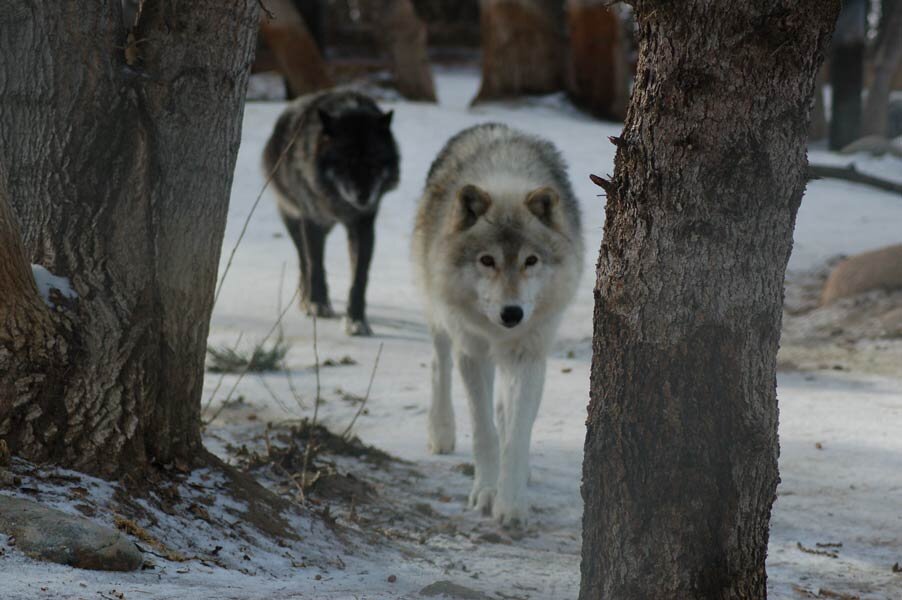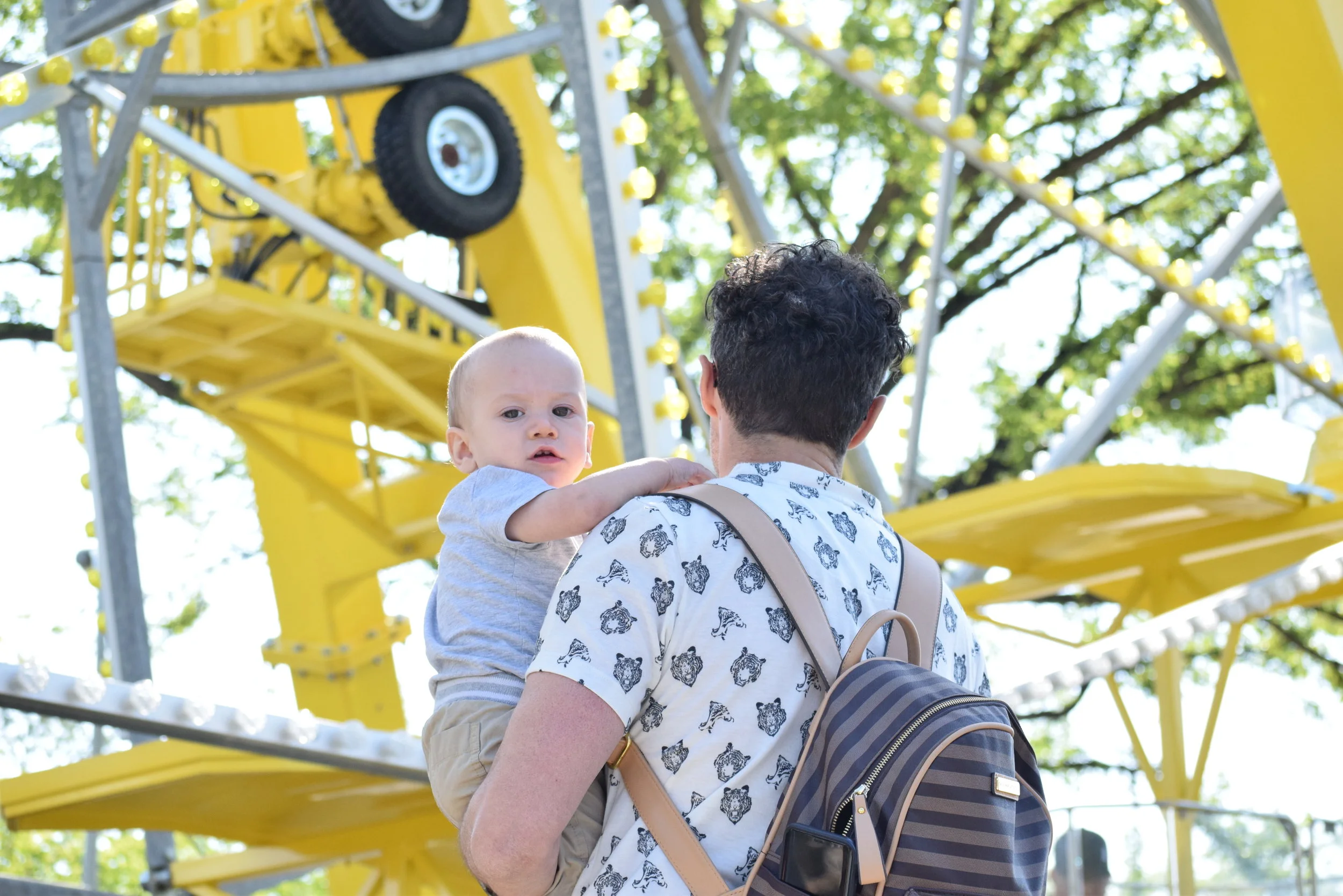Saskatoon Zoo: Rescue Stories and Beyond
If you’ve ever gone to the Saskatoon Zoo and thought “is that wolf lonely?” or “don’t eagles need more space to fly?”, you’re not the only one. I’ve often overheard those concerns being discussed at enclosures. As a Zoo supporter (my family always buys a Seasonal Pass), I’ve long been aware that our zoo is a specialized rescue facility but I haven’t been able to answer specific questions. Sure, I’ve picked up a few tidbits at Zoo fundraiser events but I usually end up forgetting just enough to be unsure! It took a request from a follower to mobilize me into blogging about animal backstories: I got in touch with Tracey Lewis from City of Saskatoon and we met up with Saskatoon Forestry Farm Park & Zoo Manager Jeff Mitchell for a Q & A. It was a remarkable opportunity and I hope I’ve done his information justice.
Jeff Mitchell, Saskatoon Forestry Farm Park & Zoo Manager
First, a quick profile of the Saskatoon Forestry Farm Park and Zoo Manager, Jeff Mitchell. He is new to the city, leaving his Illinois home (where he accrued experience at two zoos) to join us in March of 2020. “If you’ve never moved to a city where you know nothing and no one in the midst of a pandemic,” he joked, “I highly recommend it.” If you’re wondering how one gets into zoo management, Jeff has his degree in Biology and studied non-profit business management. But it’s his can-do spirit, vision for the future of our zoo, and absolutely infectious positivity that I believe makes him a win for Saskatoon. Now, onto the animals.
There are generally 3 ways animals find a home at the Saskatoon Zoo:
1. They have always lived there.
2. They are part of the Species Survival Plan. The Saskatoon Zoo works with AZA and CAZA for cooperative breeding to ensure healthy, genetically diverse, and demographically stable animal populations for the long-term future. It’s the category into which the monkeys fall, for example. It’s a program that has benefited conservation success stories, like bringing the Black Footed Ferret and the Vancouver Island Marmot back from the brink of extinction.
3. They are rescues. Unfortunately (and yet fortunately for them in the long run), abandoned animals or those in need of rehabilitation are a common category at our zoo. Following are three such stories that Jeff shared with me.
Photo of Buddy (front) and the late Zeppelin: Saskatoon Zoo Society
Buddy the Wolf
Buddy was abandoned as a pup 13 years ago and was deemed un-releasable. He was partnered up with another wolf, Zeppelin and they remained companions for 11 and a half years until Zeppelin’s death just last year. Like most of you, I worried that Buddy would be despondent and wondered if there would be another wolf introduced to keep him company. But Jeff says that since Zeppelin’s passing, Buddy, who had always been the beta before, “has really come out of his shell.” He loves people, especially children and will come right up to greet visitors. With this keepers, he trots happily over and was recently scale trained (which means he steps onto a platform where his weight can be taken).
image: City of Saskatoon
Since he no longer has a wolf friend, there is extra zookeeper staff in place for him as well as training and enrichments. And the community support for Buddy has been lovely: after learning about his needs, a 7th grade class from Sylvia Fedoruk School built cardboard enrichments for Buddy to play with. I asked, is he essentially a dog at this point? To which Jeff reminded me that no, Buddy is and always will be a wolf with wolf instincts. Rapport has indeed been built over time with his keepers, but they still work in teams of two and observe strict protocols.
image: Saskatoon Zoo Society
Dawson & Juneau the Eagles
What an opportunity we have to see eagles so close-up! They look pretty big soaring in the sky but seeing them perched 15 feet from you and stretching their wings is a whole different perspective. These eagles were injured in the wild (one suffered an eye injury and the other, a wing that would never be the same); neither would be able to survive in the wild. Something interesting I learned was that all of the animals in the zoo are seen and treated by top Veterinarians from the University of Saskatchewan, which means their care and access to specialized technology is unparalleled. These eagles, for example, are vaccinated for West Nile Disease, and there is a group that monitors the mosquito population, testing for the disease (yes, it’s present)— research that’s important to eagles in the wild. Now, why is their enclosure the size it is? The fact is that more space would be dangerous for these eagles. If they were to reach full flight speed with an eye or wing impairment, they could get seriously injured again. The habitat is specifically designed for these two birds, keeping space open so the bird with the vision issue is able to find food easily and so the injured-winged eagle has enough room to exercise without flying into anything. Jeff stressed that each habitat is tailored to benefit the long-term health and well-being of each specific animal.
Koda and Mistaya the Bears
If you recall the story of Bear 66, you’ll recall she was hit by a train in Banff in 2005. Two of her three cubs died leaving but one cub left: Mistaya, who stayed in the wild until it became clear he could not survive without intervention. His “brother” Koda was also a rescue, from the Jasper area. These two have been in Saskatoon for 13 years, having started their cared-for lives in Alberta and they are doing great. A lot of people think bears hibernate but actually, they go into a long, deep sleep called torpor during the cold, lean winter months. But torpor is a result of conditions, namely a change and decrease in available food so for many years, Koda and Mistaya didn’t go through torpor. Rather, they just stayed awake without a changing diet. It was relatively recent that the Saskatoon Zoo decided that the torpor state was important in encouraging a more natural health journey for the bears. An animal nutritionist was brought in to determine what and when the bears should be fed all year long and the offerings mimic what the bears would eat in the wild: more grain after torpor, moving toward 6-8 kilos of meat and veggies a day, and then cutting the food supply off completely. Before torpor, bears gain between 25-40 kilos to weather that big sleep! Jeff said it’s cool to see them getting ready, dragging branches into their cave and getting cozy.
Image: City of Saskatoon
The care they’ve received is so complete, they’ve even had root canals done with a veterinarian dentist and animal anesthesiologist! Pictured is a minor tooth procedure. (From Tracey: “Big thanks to Kenderdine Dental for donating equipment to facilitate dental work for our zoo animals!”)
Image: Saskatoon Forestry Farm Park & Zoo
Beyond elements in their habitat, the bears’ enrichment also comes from daily interaction and training with their keepers (always behind a fence). It’s important for their mental stimulation, says Jeff, but even more so for their physical health. During training sessions, bears stand, hit targets, open their mouths, and go through other movements— a process whereby issues like pain or tooth problems can be observed. He emphasizes that all training is done through positive reinforcement only and that the only priority is that it benefit the animal.
FAQs
Okay, maybe it’s only me that’s asking these frequently in my mind. But I needed to know, what happens with all the animal poop? Jeff laughed and said there is a LOT of poop and that while that belonging to carnivores is simply disposed of, the herbivore waste is actually taken to an on-site composting facility whose end compost gets used around the park. There used to be a public sale, apparently! But with that system, they ended up buying fertilizer for the park because they couldn’t keep up with zoo and public demand. So now, they’re saving money by using it all on-property.
I also wondered, has anyone ever broken into an enclosure? Jeff told me that so far, so good in terms of break-ins and animal escapes but that there are procedures for literally every emergency situation including storms, a lost child, or fire. They drill all possible situations to be prepared.
What’s Coming Up?
I REALLY tried to get the inside scoop for future plans and though Jeff and Tracey were tough nuts to crack, I did get some good info for you! We’ll see a goat barn renovation soon, the Zoo Foundation is currently raising money for the bears’ home, and funding has been secured to transform the Learning Centre. The Centre will feature new animals and will have more naturalistic habitats. If you’ve visited the new glass-walled prairie dog enclosure, it gives you insight into Jeff’s vision for the zoo: getting people closer and more engaged in the experience while respecting and encouraging the animals’ natural behavior. Of course I was dying to know if we could expect any new animals. There wasn’t an answer per se but here’s what Jeff told me were the considerations when bringing in any new animals:
their conservation status
what the needs are for those animals and if the Zoo is equipped to do well for them
gauging the community’s response (will people be excited?)
availability, if it’s an animal within the species survival plan
how the animals fit into the Zoo’s future plans
opinions of the staff and Zoo Curator
This area pictured above is where the prairie dogs used to live (its location is when you just walk in) and I was excited to learn it will be the new concession and main washroom location! The Buckeye Cafe will move from its peripheral location to this more central one, a move that makes sense to me.
I hope you learned something in this post and that you’re feeling positive about supporting the work of the Saskatoon Forestry Farm Park & Zoo. When people take an interest in animal welfare, I believe it benefits humanity. Thanks so much to Tracey and Jeff for making this possible!
One more thing: if you enjoyed my blog and don’t follow me on Instagram yet, please click here & hit that follow button. Your support there means I can keep my website space beautifully ad-free.
xo













